Easy Drawings of Hands Easy Drawings of Hands
The Secret to Drawing a Hand
Are you one of those people that absolutely loathes drawing hands? Do you hide the hands in pockets or behind the behind the person's back? There's no reason to approach drawing hands like that. It's true that most people believe that hands are some of the hardest things to draw. NOT SO!
I'll be honest, drawing hands is difficult when you don't know what to look for. But when you know how to look for specific shapes, they are a lot easier to draw. Drawing hands, or anything else for that matter is as easy as drawing some simple shapes. I'm talking square and triangle simple.
Shapes that Make up the Hand
Look at your own hand. If you look at the basic shape of the palm, you'll notice that it makes the shape of a square. This square can change a bit when the hand is in a different position, but it's still there. You can almost think of the the square that makes up the palm as sheet of paper. A sheet of paper is rectangular in shape but it can be bent and can appear curved at certain angles.
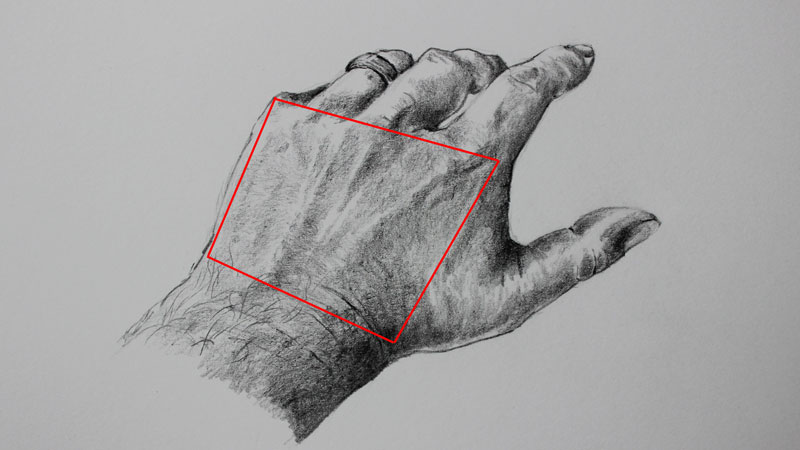
The shape that is created where the palm meets the thumb of the hand is a triangle. Here again, this triangle shape can change a bit when viewed from different angles, but it's still there. You just have to know to look for that shape.
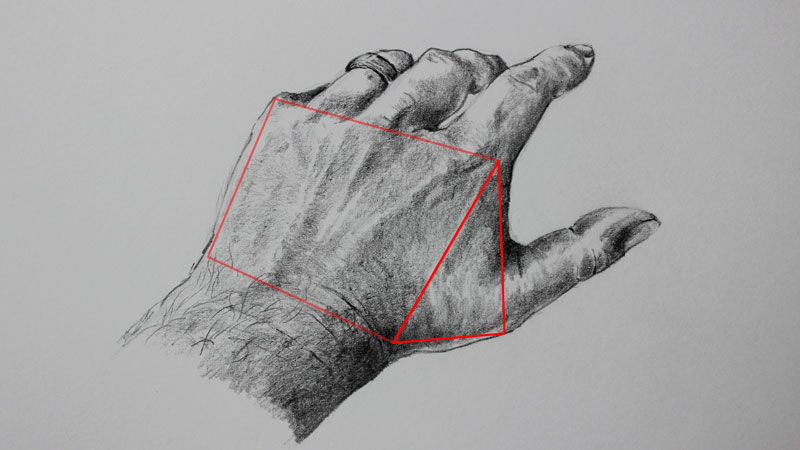
Then it's on to the fingers. The shape of a finger is simply a cylinder. The main fingers are made up of three small cylinders, while the thumb will only have two. Depending on the angle, the cylinders of the fingers may overlap, covering some of them from view. The cylinders may also taper or become larger depending if any foreshortening is involved.
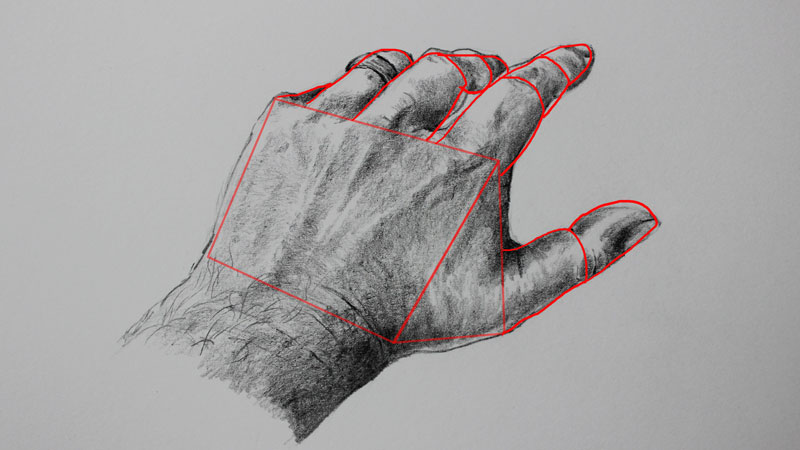
Remember, by changing the angle of the hand, the shapes may change a little- but they're still there. You need only to train your eye to find the shapes that make up the structure of the hand. Fortunately, these shapes are easy to draw.
After you've drawn the shapes, draw the contour lines. Use the shapes as a guide. (Make sure your proportions are correct.) Once the shapes are there on the surface, drawing the outlines is a lot easier. This allows you to concentrate on the lines that you add to the drawing. Be sure to draw the lines with consideration to line quality. Add variety to your line and push the illusion of form through the marks that you make.
Typically areas where the hand becomes larger will require thicker lines. Areas of shadow will also need thicker lines. Some areas may receive a very thin line, or maybe no line at all.
Create the Illusion of a Light Source
We see objects and make sense of the world around us based on the light. It is the light that informs us of the form of the objects that we see. Every drawing needs to have a defined light source. We can create the illusion of light through our use of value, or the darkness or lightness of a color.
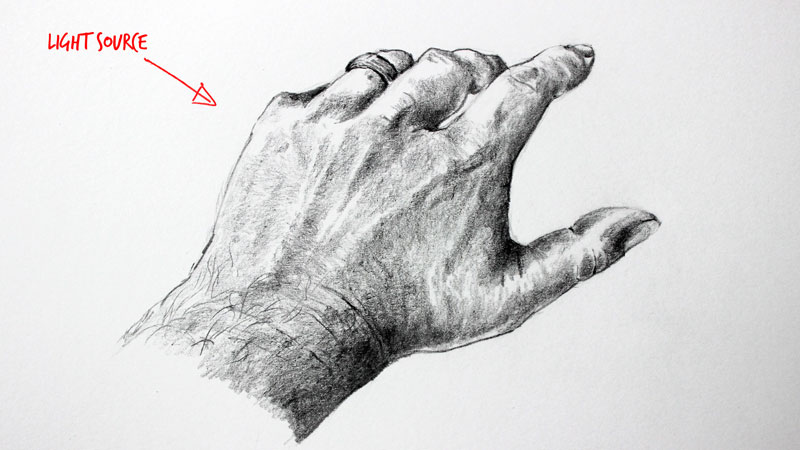
The light source is defined by factors that are related to value. On the side of the hand that receives the light source, we will see highlights which are communicated by tints (light values). Areas that protrude will likely be areas of highlight.
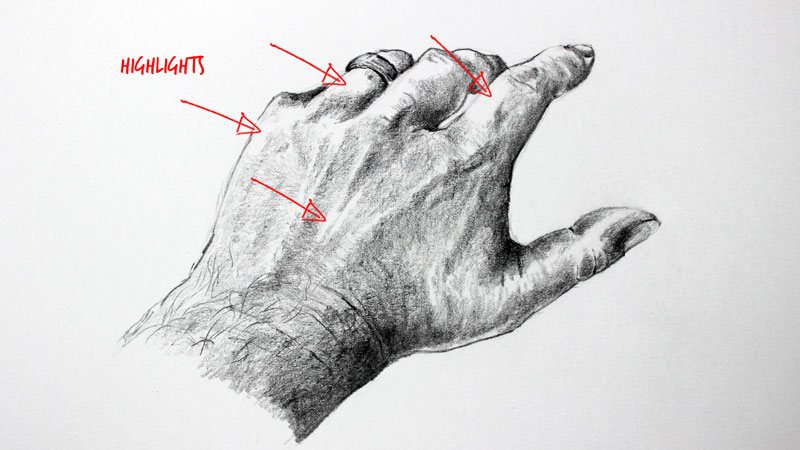
On the opposite side of the light source, we will see shadows. These areas will be communicated through darker values. Areas that recede will likely be areas of shadow.
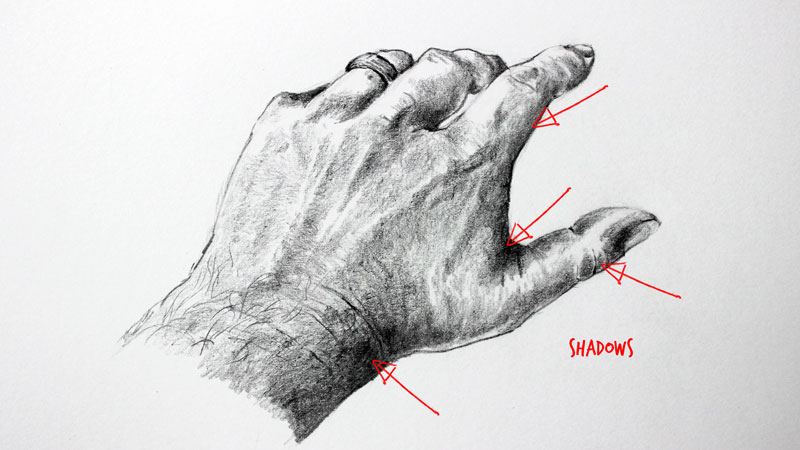
Make sure to include a full range a value when you draw hands. Remember, it is the value that tells the viewer about the form of the hand.
Nothing drives me crazier than to see a student draw a figure and hide the hands! There's no need for that! It's not hard to draw hands!

Drawing Hands with Basic Shapes
Drawing hands is great way to practice your drawing skills in general. We've always got them with us, so we can look at them and use them as references at anytime.
Let's take another look at the process that we explored above. This time, we'll highlight each of the shapes, making them a little easier to see. Take it a step at a time and pay close attention to each shape. Take note of how each shape can be used to draw a hand in any position.
Begin by drawing a shape that represents the backside of the hand. Most likely, this shape will be rectangular, but it may curve slightly as we see below. (Remember, keep your drawing fairly loose in the beginning stages. We can always refine the shape as we go along.)
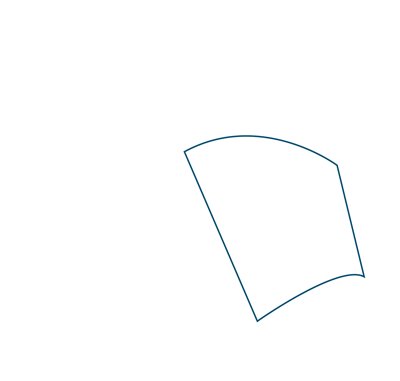
Next, draw a triangle on the side of this shape. This shape will act as the connection between the thumb and the backside of the hand. On the lower portion, we'll eventually add a thumb.
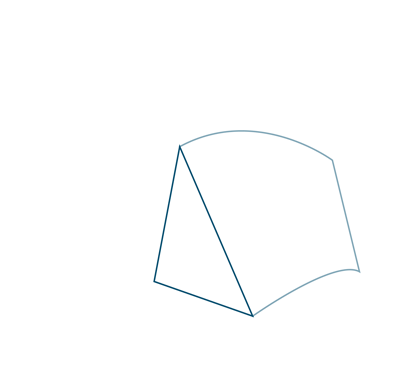
Next, a few smaller cylinders can be drawn extending outward from the rectangular shape that was drawn for the backside of the hand. These shapes will become the lower portions of each of the fingers.
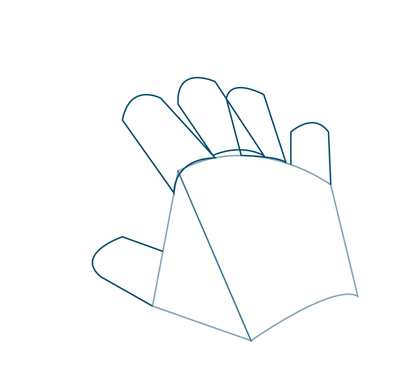
A second set of cylinders are drawn to extend the fingers out further.
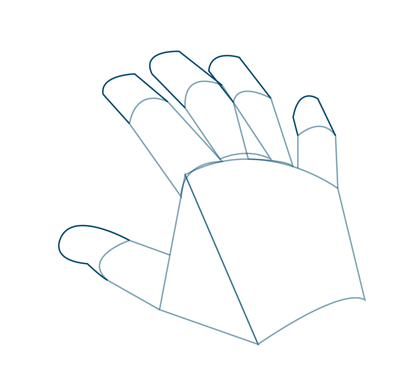
The fingers can be finished off with yet another set of cylinders. Take note of how each cylinder becomes a segment of the finger.
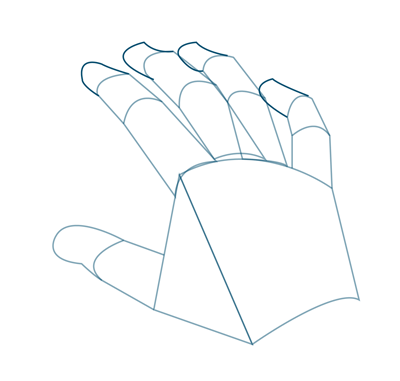
Outlines and shadows can be added to finish the drawing of the hand. Remember to consider the light source when you are adding the shading. It should be consistent for all of the parts of the hand and each of the fingers.
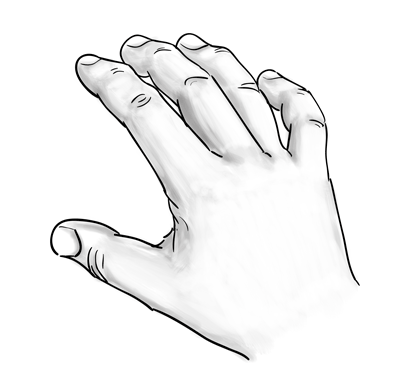
More Lessons You'll Love...
Source: https://thevirtualinstructor.com/how-to-draw-hands.html
Post a Comment for "Easy Drawings of Hands Easy Drawings of Hands"